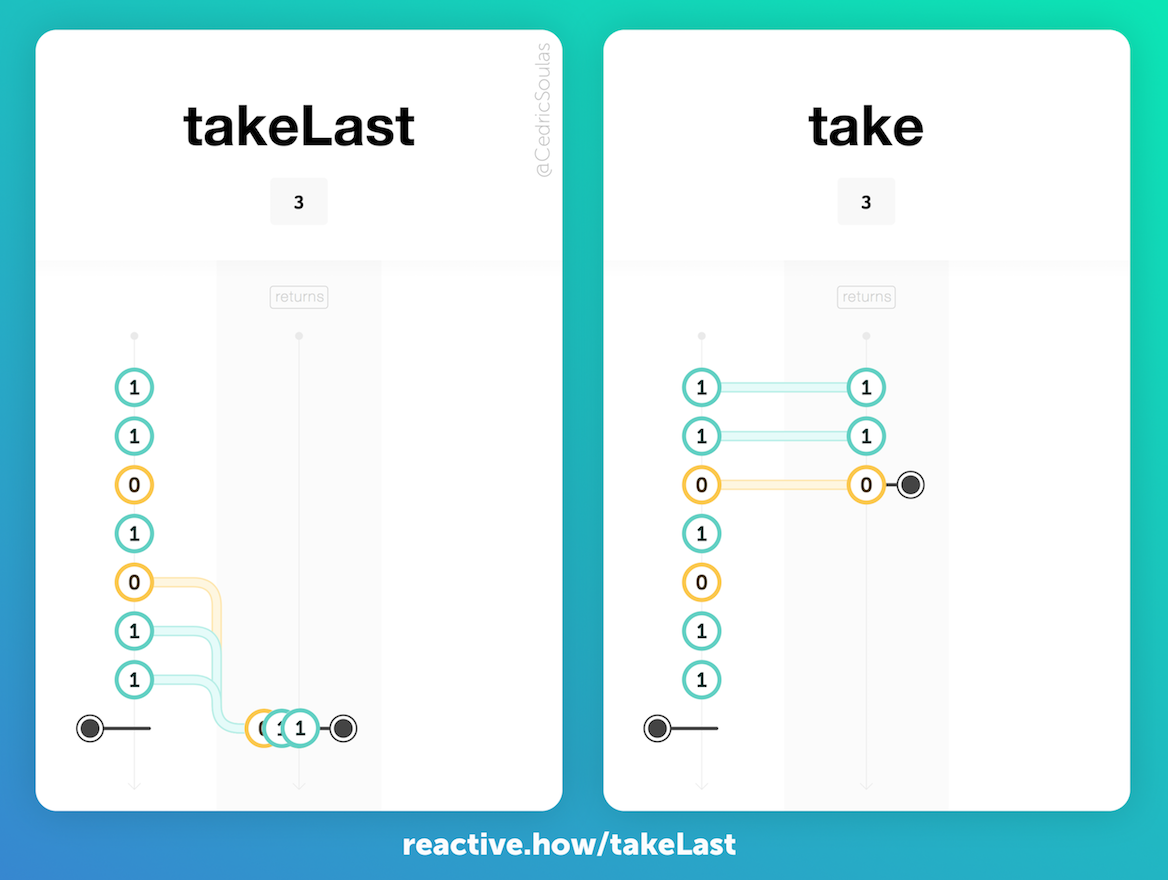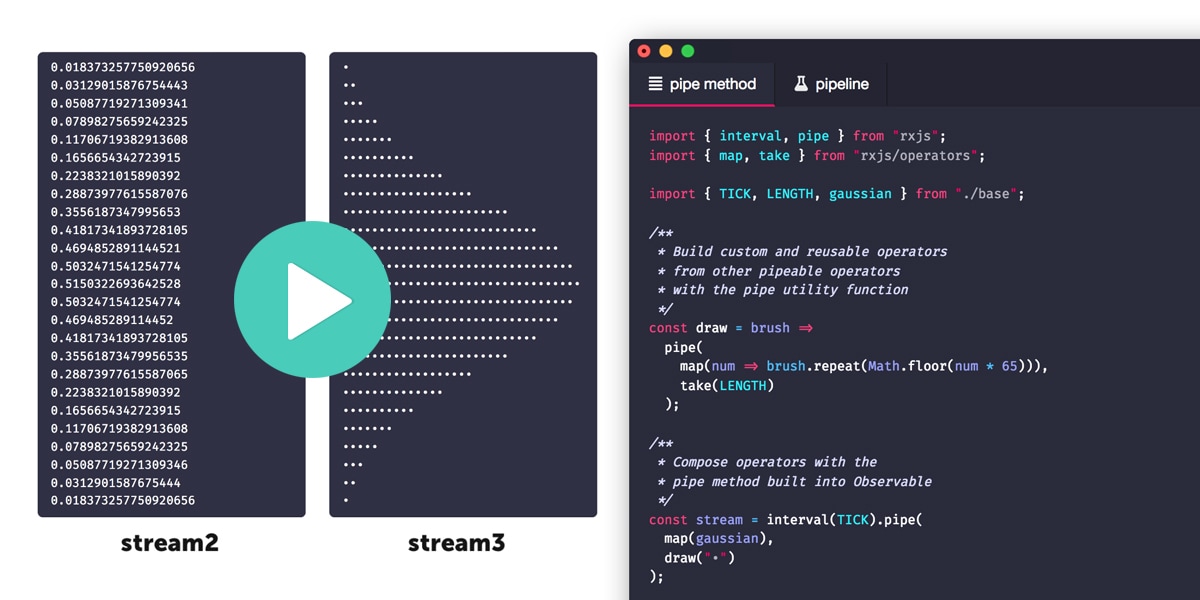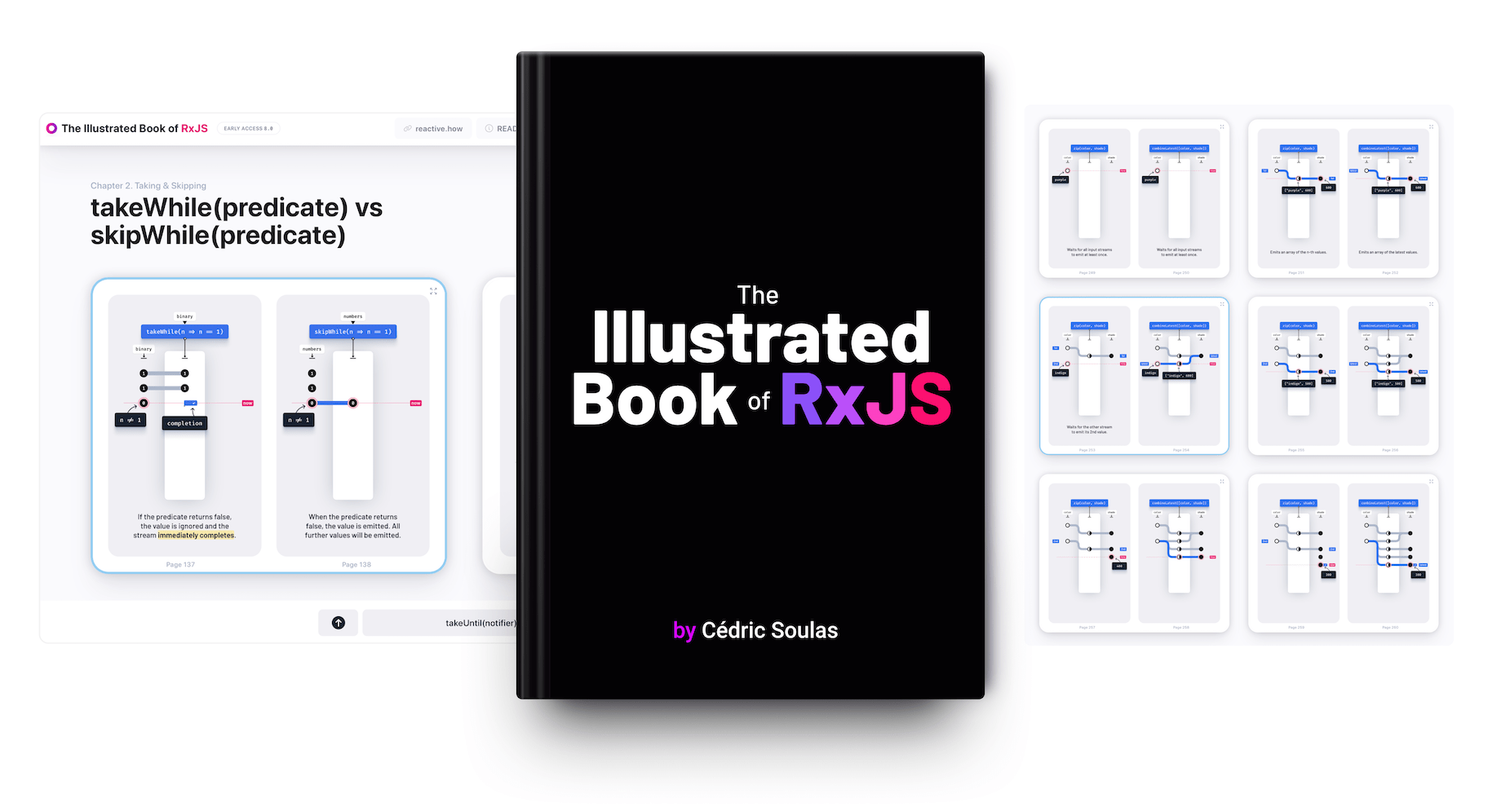
take
accepts
1 input stream,
an amount
-
❯When the input stream emits its n-th value:
- if n <
amount, the value is emitted - if n ==
amount, the value is emitted and the stream immediately completes
- if n <
returns
a new stream of at most amount values
takeLast
accepts
1 input stream,
an amount
-
❯When the input stream completes, the output stream:
- emits each of the last
amountvalues emitted by the input stream (they are emitted as separate event values) - and immediately completes
- emits each of the last
- ❯If the input stream never completes, the output stream never emits
returns
a new stream of at most amount values
Revised on Monday, 8 Oct. 2018
Learn more about stream completion.
Use a ▬ number on these cards, such as 3, to set a maximum amount of events to emit. ❚ take and ❚ takeLast share identical behavior:
- they both return a new stream of at most amount values.
- if the input stream source emits fewer than amount values then all of its values are emitted on the output stream.
The stream returned by ❚ take emits the values at the same time as their counterpart on the input stream. This is not the case for ❚ takeLast. Remember: a stream is a sequence of events over time. And we can’t see the future! takeLast must wait for the ◉ complete notification. Only then, we know what are the last values.
See also

Freelance Developer Advocate. Motion graphics with code. JavaScript and Elm. cedricsoulas.com

Join the Newsletter
Receive my latest news, product updates and programming visualizations. You can unsubscribe at any time.

